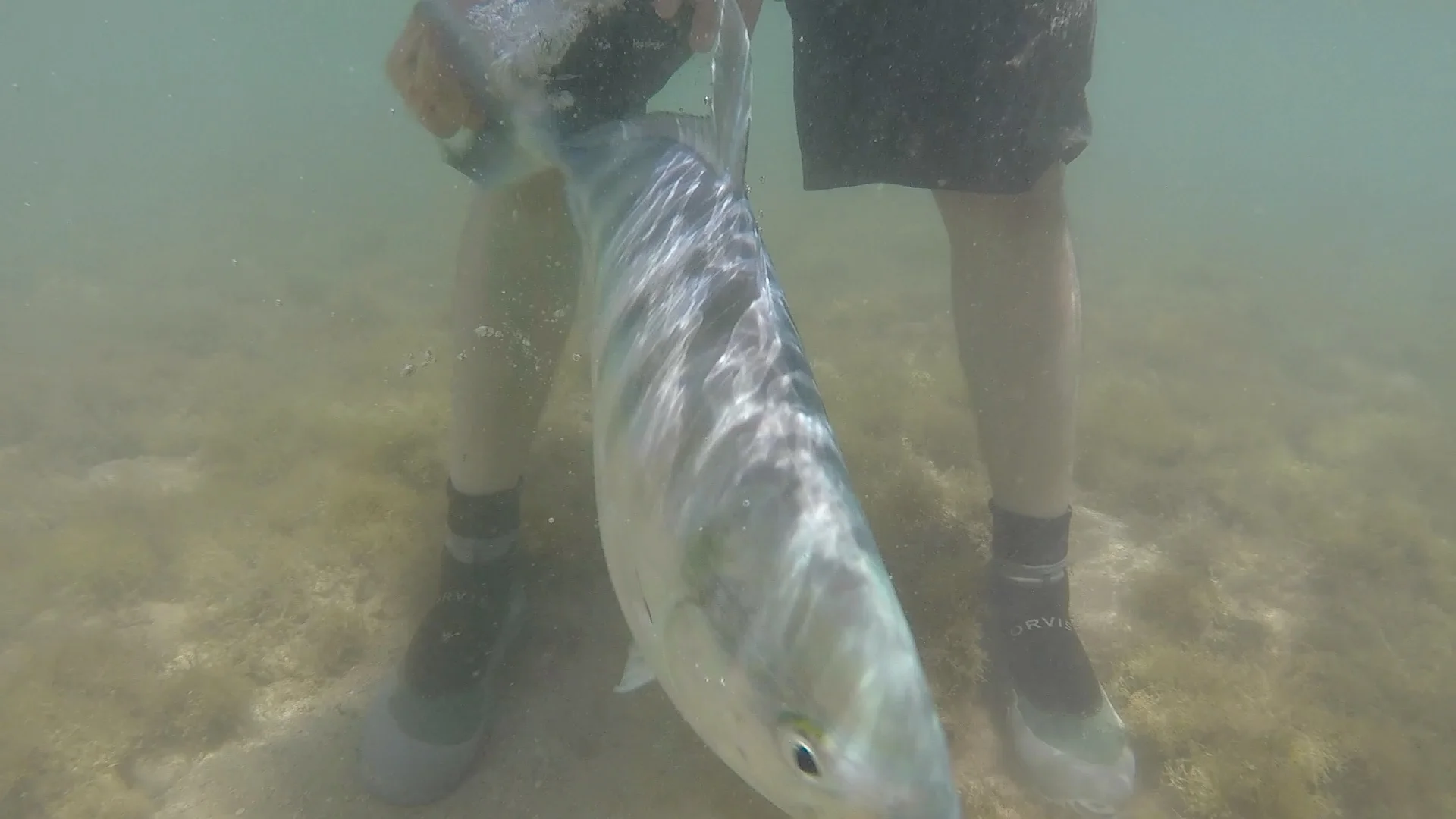Fly Fishing Guides and Getting Started
/There are only a handful of fly fishing guides in Hawaii and everyone has their own theory on catching the elusive bonefish. Each guide is great in their own way, but we all share a common goal- getting you to land a Hawaiian Bonefish, with limited time, and in some cases limited experience. So how do we get our customers to catch bonefish? We start by ensuring that you have the right equipment for the job.
What are the must haves for fly fishing? You will need a fly rod, floating fly-line, fly line backing, a real, tapered leader, and a proven fly. You will also need personal protective equipment including polarized sunglasses, shoes or tabi, and proper sun protection. Spending hours in the hot sun and casting a hook can cause serious damage to your skin and eyes. Don’t panic- your guide will likely already have much of the equipment you need, but it is best to check with them before your excursion.
The first day I started this epic adventure of fly fishing, I was told an 8-weight or 9-weight rod with a matching reel is what I needed. Since then, I’ve experimented with smaller rods and reels to increase the challenge at hand. The higher weight rods and bigger reels are easier to cast in Hawaii trade wind weather and add more tension to line when reeling in fish. The bonefish tend to run at you during the fight, which may pop the hook. Keeping constant tension is important to land these giants.
What is fly-line backing? Usually, you add about 100-200 yards of backing to your fly reel before adding the fly line. Pound for pound, these bonefish put up an incredible fight, and their initial run may spool you if you do not have enough line. The standard fly line is about 80 feet, simply not enough line to match the distance these fish cover.
The weighted fly-line usually matches the rod rating. For example, if you are using a 9-weight fly-line then you will typically use a 9-weight rod. As you experiment with different rods, you can either go one weight up or down, depending on the stiffness of the rod and line being used. I personally like to keep it simple and use matching lines and rods. The weight of the fly line will allow you to cast the fly without the use of a lead or floater.
Tapered leader is the line either bought or made that allows the line to straighten out smoothly during the cast. Some individuals will make a leader with three different segments of line starting at 40lb test at 5 feet, 30lb at 4 feet, and 20lb at 3 feet with surgeon knots in-between. This gives a total length of 12 feet. Others, including myself, like to buy pre-set leaders such as 12-foot leaders with the tapered ends at 18lb test.
Which fly do I recommend? The Ghetto Super Fly. It’s a simple fly that represents a mantis shrimp. You can make it in a variety of colors: orange, red, yellow, green, white and the ones that work most brown or black. The weight of the fly matters. You will be able to cast closer to fish if the flies are lighter. Make sure you balance the fly using strips of led to ensure the hook is facing up. Heavier flies tend to get stuck less and is great for deeper water, fishing from a boat or in the surf.
On a boat, using heavier flies allows them to get to the bottom before the boat catches up. In windy conditions, this is super important. On light and variable days, you can get away with using lighter flies.
You can also take a trip to Nervous Water Fly Fisheries to see it they will “spill the beans.” You may get a location or a tip or two, but some things are kept secret for a reason.
Personal equipment varies depending on your preference for shirts, hats, shoes and sunscreen. The type of sunglasses you wear are important for personal safety as well as being able to see fish. I’ve tried many types of glasses, but the only ones I use now are from Costa Sunglasses with green mirror or copper lenses or yellow sunrise. This company makes glasses specifically for fishermen and they even make prescription lenses. If you want to sight fish, then you must at least be able to see the fish!
The only fly shop on the island is Nervous Waters Fly Fishers in Honolulu. They are the guys that helped me get started and have continued to give awesome advice throughout many years. They will be able to get you started and recommend the gear you need to tackle fly fishing in Hawaii. Their lead guide is Ed Tamai, who, in my opinion, is the best fly fisherman in Hawaii. He is always humble and unassuming, a truly awesome guide to fish with.
The guide you choose will usually have all of the equipment you need apart from some personal protective equipment. The right gear will help you dramatically increase your odds. You might still be wondering, how does the guide then help you catch the fish? That, my friend, is still a guide trade secret… Stay tuned.

